From Shawn: This guest post is written by Gaia Passarelli. Gaia is a writer and traveller from Sao Paulo, Brazil. I met her last year in India and was impressed with her as a person and a writer. I asked her to provide a local’s perspective on her hometown of São Paulo, Brazil. You can follow her updates at http://gaiapassarelli.com. Enjoy!
How to Experience São Paulo Like a Local

Article by Gaia Passarelli
Cover photo by Júlio Boaro.
I like to think of São Paulo as a not particularly beautiful, but stylish, smart and
interesting woman. She (because a city is feminine in Portuguese) is not easy, but is worth the effort. The 3rd largest in the world, São Paulo is also one of the most populous and polluted. During summer it can become unbearably hot, and during winter, uncomfortably cold. Shopping is expensive. The architecture is confusing. Traffic jams are legendary. And when someone invites you for a drink at the top of the highest skyscraper in town, saying “the view is amazing” you’re met with a vast sea of buildings. But between the grey and the grit lies a great city. Here’s is how to find it.
Language
If you’re going to try to see São Paulo outside of your hotel’s lobby, then you must learn some basic
Portuguese. You don’t have to be an expert, but you should know just enough to get directions, buy a caipirinha and pay for a subway ticket.
If you are familiar with Spanish, it will be easy. If not, well, it can be tough. Good thing is that
Paulistanos are kind, helpful people. It never hurts to ask for directions or help. And, no, not everyone is trying to scam you.

Transport
Avoid cars like the plague. If you stick to central areas (where most of the interesting
museums, food and nightlife are), you’ll do fine using the subway (metrô). Buses are an
option and cover all the city, but don’t expect the driver or collector to help you with
directions in English. Apps like GoogleMaps or Moovit will get you easily from A to B.
Be aware that during morning and evening rush hours the roads can get
unbelievably crowded. You’d be better spending an hour visiting a bookstore, photographing
graffiti or just walking than trying to get across Paulista metrô station or riding a cab around
6PM. Trust me.
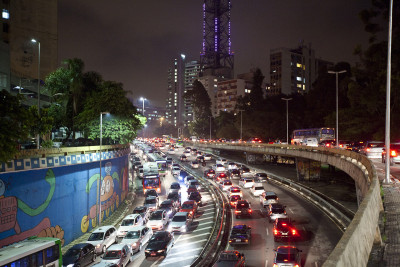
Safety
São Paulo is a megalopolis, and you must act according. Apply the golden rules: look
like you know what you’re doing, don’t flash out your expensive camera around, don’t count
dollars in the middle of the street. If in doubt, ask for help at a shop or restaurant. Play it safe,
there’s no need to enter the strange van with darkened windows alone, at the end of the
night, after severe drinking. You wouldn’t do it anywhere, would you?
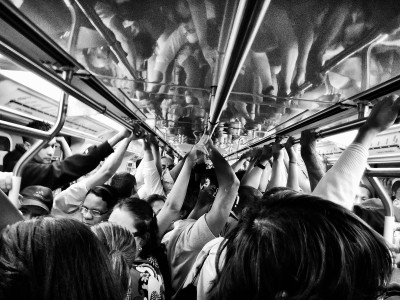
Food
Food in São Paulo at the surface isn’t much different than in any other big city. Pizza and pasta are as common as hamburgers and hot-dogs, but most of the pastries and snacks you’ll find in the padarias (or padocas, bakeries) have a Portuguese origin.
Things really begin to look interesting when you expand food options outside of North American or European cuisine. Consider Japanese, for instance. São Paulo has the biggest Japanese community outside of Japan, and Paulistanos are crazy about sushi and temaki.
As with sushi just about anywhere in the world, the cheaper varieties are hardly worth it. The good news is that Izakayas (sake bars serving small portions of delicious food) are popular too. You’ll find the best in the Liberdade (the traditional Asian neighborhood) and Pinheiros areas.
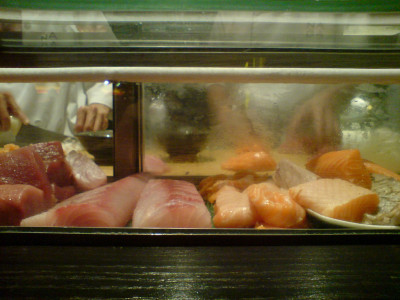
Then there’s Syrian, Armenian and Turkish food. What you’ll find in São Paulo is an
amalgam of eastern food, the heritage of immigrants that chose São Paulo as a home during
the last century. Funny enough, Paulistanos can’t tell the difference between eastern cuisines
and tend to call everything “Arabic” (árabe).
You’ll also find fresh Peruvian ceviche. Tasty and cheap Chilean empanadas. State of
the art Argentinian barbecue and wine. Delicious Colombian arepas. Spanish tapas and
paella. Moroccan couscous. Belgian moules-et-fritters. Dutch stroopwafels. German
currywurst. Even African food is starting to come around, courtesy of a growing community
of Nigerian and Kenyan expats.
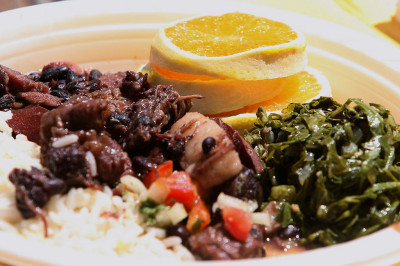
Last but not least, there’s Brazilian food. It can be hard to define since it’s a big
country, full of micro-climates and very different regions. In São Paulo, you’ll find everything
from Mato-Grosso’s approach to oriental noodles (yes, this is a thing, and it’s delicious) to
Amazonian fish to the African-inspired food of Bahia. The gaucho barbecue of the rodízio
kind, a live show of never-ending grilled meat, is mandatory.
The daily cuisine is rice, beans, steak/chicken, a simple salad and a small sweet like
fruit salad for desert. Saturday is for feijoada; a pork and beans super heavy stew that will
kill any plans you had for the rest of the day. You’ll find it from the most simple boteco (the
Brazilian version of a pub: small, no-frills, cheap bar) to expensive hotel’s buffet. My personal
choice is Feijoada da Lana, serving feijoada every Mon-Sat for more than 30 years in the
heart of the bohemian area of Vila Madalena.
More food: Breakfast and Snacks
Paulistanos start the day lightly. Enter the nearest padoca and have milk and coffee
plus bread with butter. “Na chapa” means frying the bread before serving. Add a glass of
fresh orange juice or a portion of fruit like papayas, melon or pineapple.
During the day, you’ll find pão-de-queijo almost anywhere. These little fluffy white
balls are gluten-free, made of manioc. Same goes for like the city’s second favourite: tapioca,
white small pancakes served with all kind of filling in small stalls on the streets.
Coffee is the fuel of the city. Even kids drink it with milk. The traditional way is a
coado (filtered), but espresso is widely available. And if you want a small sweet treat to go
with it, ask for a brigadeiro: condensed milk with cocoa, served as a tiny ball or inside a
small cup.

Feiras-livres
Whether you rented an apartment via Airbnb in the Consolação region or are staying
in a Vila Madalena Hostel, the weekly, open-air neighbourhood markets are the choice to buy
fresh products and everything from towels to spices. Feiras are not endemic to São Paulo, but
they are the soul of the city, a crazy mix of colours, flavours, scents and noises. Also, highly
Instagramable.
Even if there’s no need for groceries, don’t miss the chance to visit. Talk to cab drivers
or use this app to discover the address and day of the week of the feira closest to you. Go, sit
down in a plastic chair near the pastel stand and enjoy this deep fried squares of dough filled
with minced meat – cheese and palm hearts are the other local champions. The traditional
drink of feiras is garapa, sugar cane juice that tastes like liquid, pure sugar, so try and break
it with lemon, ginger or pineapple. As Paulistano as can be.
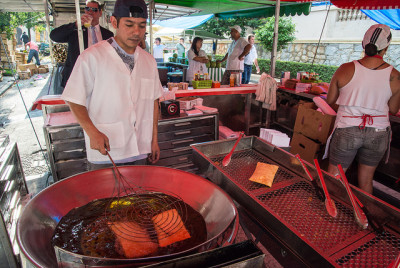
Weekends
No beaches. Few green areas that get crowded during weekends. And who wants to be
at a shopping mall when the weather is lovely? The good news is that there are a lot of things
happening all the time!
Paulistanos are reclaiming the city streets. It means there are free, fun and
alternative things going on all the time. As I write this, for instance, there’s a jazz and beer
festival preparing to take place at Beco do Batman, the open air graffiti gallery of Vila
Madalena.
The best place to witness this ongoing transformation is Minhocão (“big worm”) on a
Sunday evening. During the weekdays, this is a six-lane elevated speedway for cars crossing
trough the city center.
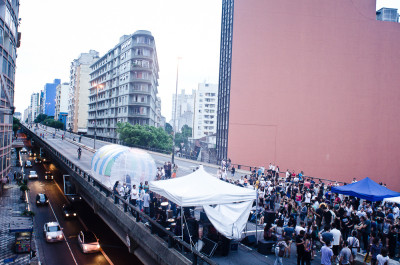
On the weekends, Minhocão is closed for cars to give the habitants of the buildings
(which were already there when this urbanist nightmare was built, in the 1970s) some well deserved
rest. So, Saturday and Sunday is when people use the concrete to fool around, walk
the dog or invite friends for a barbecue.
More Info & Weekly Guides
To find out more info, there is a Time Out SP online, but the magazine never took off in São Paulo the way
it did in New York or London. I wonder if it’s because Paulistanos are faithful to the weekly
guides that come with local newspapers. Dailies ”Folha de São Paulo” and “Estado de São
Paulo” have their pocket-sized guides our every Friday, covering all there’s to know in the city
for the upcoming week. From opera to food trucks, from markets to night clubs.
If you prefer to go online here are five Facebook pages to check when you’re in
town. CatracaLivre, Veja SP, SP24hrs.
Thanks to Gaia for sharing her knowledge of São Paulo. If you have any questions or anything to add, please feel free to do so in the comments.





Great article. It’s kinda funny that after so many trips to Brazil I’ve never been to Sampa. Time to change it, I guess.
“Italian cuisine in Sao Paulo probably competes with Italian food in Italy.”
You are Brazilian, right?
….Food in Sao Paulo at the surface isn’t much different than in any other big city. ” REALLY??? Sao Paulo food quality and variety can only probably be compared to New York. You won’t find the diversity of cuisine and the caliber of restaurants in Sao Paulo in “any other big city”. Yes, you will find amazing French restaurants in Paris, amazing Italian restaurants in Rome, etc.. but amazing restaurants from almost every corner in the world concentrated in just one city is hard to beat Sao Paulo. I would probably agree that other than amazing Japanese restaurants, Sao Paulo is not the best place for Asian cuisine but Middle Easter and European is just spetacular. BTW, Italian cuisine in Sao Paulo probably competes with Italian food in Italy. For me Sao Paulo is one of the best gastronomic cities in the world.
I would say the key words there are “at the surface”. In other words, the types of cuisine are what you would find in almost any big city, but dig deeper and you will find amazing food. Of course I am not the author, but that is my understanding.